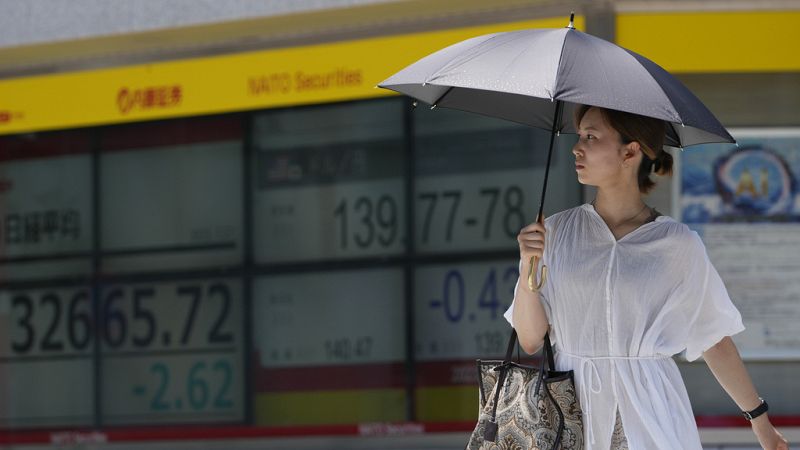
A FISTFUL OF YEN - A GAIN FOR TOURISTS TO JAPAN AS SHOP PRICES FALL
The cherry blossom season in March is always a popular time for tourists to visit Japan. This year, however, it may not have been the only reason why more than 3.1 million visitors - a one-month record, according to Japan's National Tourism Organisation - visited the Land of the Rising Sun.
Foreign tourists have been making the most of their harder currencies such as the euro and dollar to gain from an advantageous exchange rate with Japan's weaker currency.
Although the fall in the yen is hurting Japanese households, visitors to Japan are benefiting from the exchange rate difference, according to the AFP press agency.
Average spending per person by foreign tourists was up by 52% between January and March this year, the agency reported, compared with the same period in 2019. That was the last year of comparison because of the Covid-19 pandemic.
A 1,000-yen ramen cost €8 euros back then, compared with €5.8 euros at the start of the week. And a luxury watch costing 5,600 euros in 2019 is now worth "only" around €4,000. Tourists can also benefit from tax relief by presenting their passports.
A benefit to both foreign tourists and large local companies
A weak yen is often seen as a boon for "Japan Inc" as it helps to make commercial exports, such as Nipon's car exports, cheaper abroad and boosts profits when income from abroad is brought home.
However, at the same time, it raises the cost of raw materials, food and fuel, adversely affecting farmers who import fertilisers to small manufacturers who rely on spare parts from China.
Small businesses employ most of the workers in Japan, and cannot afford to pass on rising costs by raising their selling prices in a competitive market.
What is the yen's future?
EUR/JPY extended its losses for the third consecutive session, trading around 164.60 during Friday's European session. The Japanese yen (JPY) strengthened on Friday following a potential intervention by the Japanese government, marking the second such incident in a week, according to Reuters.
On 29 April, the currency plummeted against the dollar to 160.17 yen, a level last reached in 1990. It later recovered.
On 1 May, a sharp rise took the Japanese currency to 153.04 yen to the dollar although it later fell back slightly. Even so, by the close of dealing, the Japanese currency was still up 2.08% on the day, a big jump in a market where daily fluctuations are often limited to a few tenths of a percentage point.
Bank of Japan (BoJ) data has revealed that Japanese authorities may have spent around JPY3.66 trillion on 1 May in supporting the yen. Earlier in the week, the Japanese Ministry of Finance also intervened in the market, potentially investing around JPY 6,000 billion (€36 billion).
According to Bloomberg, Masato Kanda, Japan's top currency diplomat, declined to confirm the intervention directly but indicated that the Ministry of Finance intended to disclose related data by the end of the month.
Despite the sharp fall in its currency, the Japanese central bank left its key rate unchanged at the end of April, keeping it between 0% and 0.1%, and maintaining a rather conciliatory tone.
This was an expected break after the BoJ began normalising its monetary policy in March, when it put an end to its negative interest rates, the most spectacular tool in its ultra-accommodative policy.
2024-05-08T05:23:20Z dg43tfdfdgfd